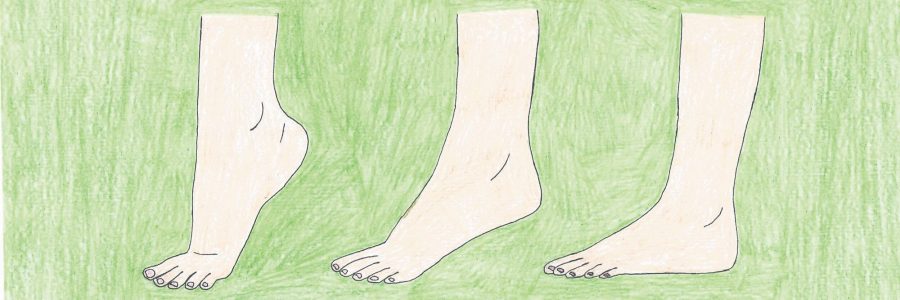New discovery connects human evolution to the arches in our feet
March 22, 2020
According to Science News, a new study reveals that humans were able to walk upright over time because an arch formed across the foot’s width.
When you think of arches, what comes to mind? Some may say The Golden Arch in St. Louis, but on a daily basis, we see a more important one — the arch of your foot. The arch is an important part of the body because it endures the brunt of the body’s weight and absorbs shock, making actions like walking or running possible and easy.
Scientists previously knew the role of arches in carrying the body. This study is considered groundbreaking because it gives insight to how feet are able to sustain weight.
“Scientists knew that the arch on the inside of the foot, called the longitudinal arch, makes the foot more rigid, thanks to the arch’s shape and elastic tissues stretching beneath it like a bow and string. How much the bend across the metatarsals helps make feet firmer was unknown,” according to Science News.
For those not acquainted with the anatomy of the human feet, here is a basic breakdown. The foot consists of three arches: two longitudinal arches called the medical and lateral arches and one anterior transverse arch.
Encyclopedia Britannica explains, “The big toe converges with the others and is held in place by strong ligaments. Its phalanges and metatarsal bones are large and strong. Together, the tarsal and metatarsal bones of the foot form a longitudinal arch, which absorbs shock in walking; a transverse arch, across the metatarsals, also helps distribute weight. The heel bone helps support the longitudinal foot arch.”
Now, scientists understand that the transverse tarsal arch is essential for stability as well. Since it branches across the foot, it allows the foot to maintain a stiffness. This allows it to curl and flex without making the foot lose its shape or collapse.
For individuals fortunate enough to have arches in their feet, this discovery does not seem special. It is important, however, for those with no arches or flat feet. This newfound knowledge changes the way in which prosthetic feet will be designed.
According to the National Foot Health Assessment, there are currently 18 million people in the United States who are suffering from flat feet or pes planus. Among these 18 million people are Katie Holmes and Angelina Jolie.
With no arches, the body redistributes its weight onto the individual’s knees and legs causing chronic hip and back pain. There is no remedy for flat feet. Instead, these individuals are forced to buy shoes with arch supports or other modifications, wear braces or get feet injections to ease the discomfort. Without these remedies, the only option left is to simply endure the pain and ice their feet daily.
With the discovery found in this study, individuals wanting to walk will be able to use their usual prosthetic feet, but now scientists know how to design a foot sturdier for running as well.
The head researcher for this project was Madhusudhan Venkadesan, a mechanical engineer at Yale University.
He and his colleagues “tested the stiffness of three types of curved structures, including a thin sheet, mechanical structures mimicking feet and two feet from cadavers, and found that a transverse arch makes materials more rigid. When the researchers cut tissues between the bones that comprise the transverse arch in cadavers, the foot’s stiffness went down by up to 54 percent.”
This study revealed just how integral the transverse arch is ensuring that the foot maintains its shape. This is similar to the function of the spine, as it allows humans to bend forward, jump, run, and walk, and not completely fall apart.
These researchers also strived to find the first appearance of arched feet in human evolution. In order to do so, they examined the fossils and skeletons from our ancient ancestors.
In animals, flat feet have already been found. For instance, the chimpanzee, a primate closely related to humans, has feet with less defined arches. With humans evolving from a shared ancestor with chimpanzees, humans too had flat feet for generations.
From their scrutiny, the researchers deduced that about “3.4 million years ago,” an unknown human ancestor’s foot evolved to develop the transverse tarsal arch.
Still, scientists lack vital information about human feet. Their experiments and testing did not provide insight into the parts of the feet that touch the ground because they worked with a mimicked model of the human feet. This information is equally important because it needs to be factored in when considering the stiffness of a human foot for flat feet and for arched feet.
With the information scientists have gleaned thus far, they will be able to work towards designing a prosthetic foot that will allow flat footed individuals to no longer feel pain. In fact, the discovery of the central arch’s role in the foot could help those individuals come closer to being able to move as though they had arched feet.
Until scientists can figure out the ratio of stiffness needed to design the foot, this study is still one step in the right direction.








